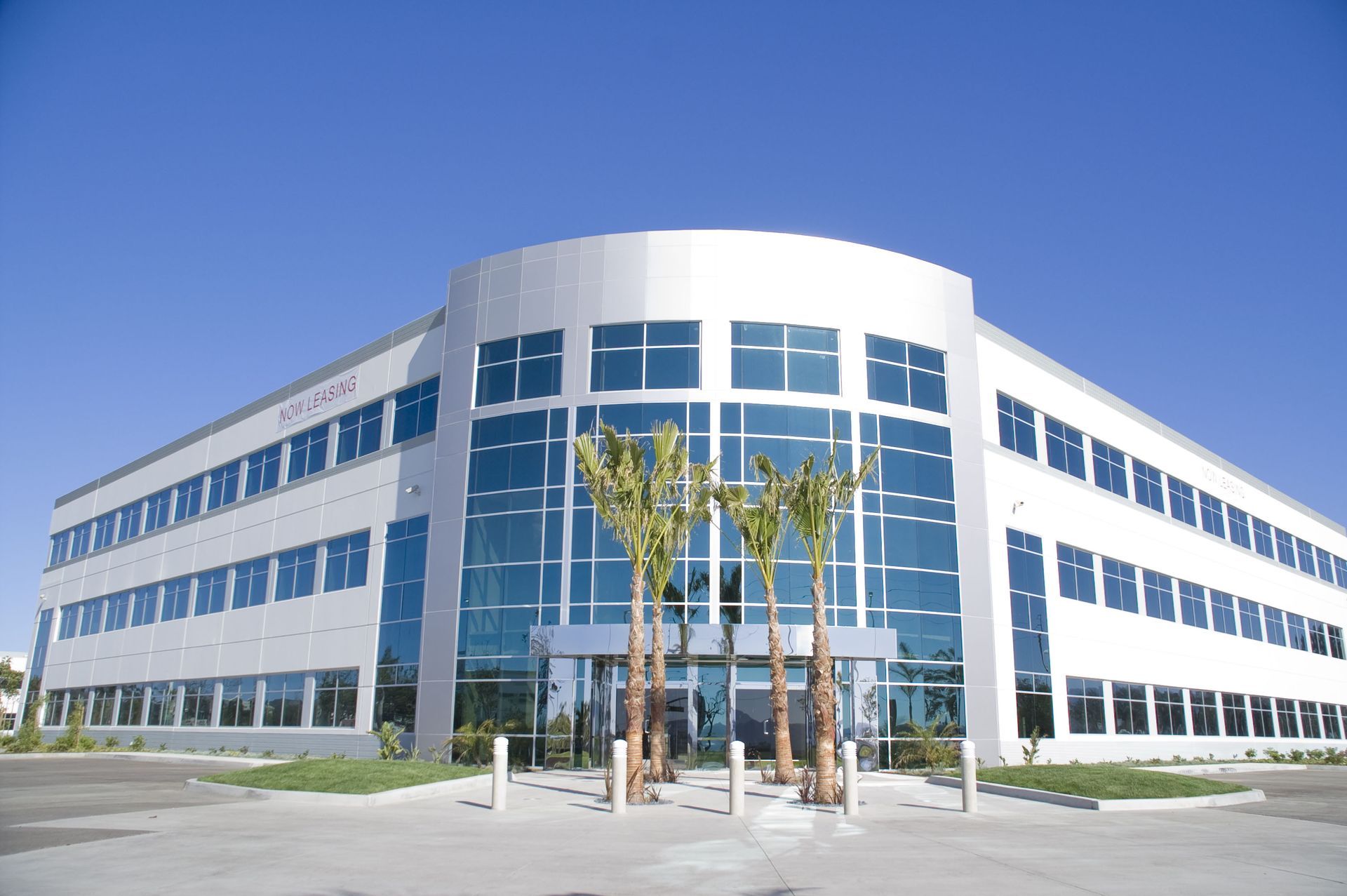August 28, 2025
The U.S. commercial real estate market is a cornerstone of the country's economy, serving as a barometer for economic health and investment opportunities. This sector is pivotal, representing a complex interplay of various market forces that determine its dynamic nature. The value of commercial real estate extends beyond mere land and structures, as it embodies economic activities that fuel job creation and innovation. According to Statista, as of 2023, the U.S. commercial real estate market was valued at approximately $20.7 trillion, underscoring its substantial size and influence. This article will delve into the multifaceted factors contributing to the valuation of commercial properties, providing a comprehensive understanding for investors and stakeholders considering commercial office leasing.
Economic Indicators and Their Impact
Gross Domestic Product (GDP) and Real Estate
The correlation between GDP growth and commercial real estate demand is evident, as economic expansion typically spurs business activity. When GDP increases, businesses often seek to expand operations, raising demand for additional office and industrial spaces. This burgeoning demand directly influences property values, as markets with robust economic growth exhibit higher rental rates and property prices. Conversely, during economic slowdowns, the reduced business activity can lead to vacancies, impacting valuations negatively. Therefore, understanding GDP trends is crucial for investors to gauge the health and potential of commercial real estate markets.
Interest Rates and Financing Costs
Interest rates play a pivotal role in determining the cost of financing commercial real estate transactions. When interest rates are low, borrowing costs decrease, making it more attractive for investors to finance property acquisitions. This often leads to increased demand and, subsequently, higher property values. Conversely, high-interest rates can dampen investment appeal, increasing holding costs and reducing the overall affordability of properties. Thus, changes in interest rates can cause significant fluctuations in the commercial office leasing market, influencing investment strategies.
Inflation and Property Value
Inflation impacts various aspects of commercial real estate, including rent prices, construction costs, and property value appreciation. As inflation rises, the cost of building materials and labor increases, affecting new project developments and, in turn, property supply. Furthermore, inflation often leads to higher rental rates, as landlords aim to maintain their purchasing power. However, if inflation outpaces economic growth, it can hinder the affordability of commercial spaces, leading to value stagnation or decline. Investors must consider inflationary pressures when assessing potential returns on commercial real estate investments.
Employment Rates and Economic Activity
Employment rates are a vital determinant of commercial real estate demand, as they reflect broader economic activity. High employment levels generally coincide with increased demand for retail, office, and industrial spaces, as businesses expand their workforce. This demand sustains rental rates and supports property valuations, making locations with stable employment particularly attractive. Conversely, rising unemployment can reduce demand for commercial spaces, leading to increased vacancies and declining property values. Monitoring employment trends allows investors to anticipate shifts in demand for commercial office leasing.
Location and Demographic Factors
Urban vs. Suburban Trends
The shifting population dynamics between urban and suburban areas significantly affect commercial real estate demand. As urbanization increases, cities experience a surge in demand for office spaces, retail shops, and residential accommodations. However, rising urban living costs and the lure of more space have driven some businesses and residents to suburban locales. This suburbanization trend can lead to real estate value increases in previously overlooked areas. Investors need to assess demographic shifts to capitalize on emerging suburban markets without ignoring enduring urban opportunities.
Transportation and Infrastructure
Access to transportation and robust infrastructure is a critical factor in the attractiveness and valuation of commercial real estate. Properties located near major transportation networks, such as highways, airports, and public transit, inherently possess a locational advantage. These access points increase the ease of doing business and attract higher tenant interest, leading to increased property values. Conversely, inadequate infrastructure can hinder accessibility and reduce a property's desirability, impacting its market value. Proximity to well-managed infrastructure is therefore often seen as a premium feature in real estate markets.
Demographic Changes and Consumer Behavior
Demographics significantly influence consumer behavior, which in turn affects commercial office leasing values. An aging population may increase demand for healthcare facilities and retirement communities. Conversely, younger demographics might boost demand for urban apartments and lifestyle retail centers. Additionally, migration patterns—both domestic and international—have a profound impact on regional economic activity and real estate demand. Investors must analyze these demographic shifts to anticipate changes in property demand and optimize their investment strategies accordingly.
Environmental and Sustainability Considerations
The importance of sustainability in real estate has increased due to environmental concerns and consumer preferences. Green building practices not only reduce a property's environmental footprint but also enhance energy efficiency, decreasing operational costs. Sustainable properties often command a market premium due to their appeal among environmentally conscious tenants and investors. Moreover, regulatory requirements mandating sustainability standards can affect construction costs and investment returns. Integrating sustainable practices can significantly boost a property's long-term value and mitigate environmental risks.
Types of Commercial Real Estate
Office Spaces
The valuation of office spaces is intricately tied to trends in work culture and business operations. Remote work has altered demand patterns, with businesses reevaluating office space needs and shifting towards flexible working arrangements. However, central business districts remain attractive due to their connectivity and amenities, sustaining rental rates in key urban areas. Innovative office designs that accommodate hybrid work models are increasingly sought after, influencing valuation criteria. Investors in office properties must stay attuned to these evolving trends to align their strategies effectively with commercial office leasing market demand.
Retail Properties
The retail real estate sector is undergoing transformation driven by e-commerce growth and changing consumer habits. Brick-and-mortar retail spaces face challenges as online shopping becomes more prevalent, necessitating the diversification of retail offerings. Many retailers focus on experiential shopping environments to attract foot traffic, emphasizing entertainment and dining. Mixed-use developments have gained traction, integrating residential and commercial spaces to create vibrant environments. Investors must navigate these trends by seeking properties that adapt to the new retail landscape, balancing traditional and innovative tenant portfolios.
Industrial and Warehouse Facilities
The demand for industrial and warehouse facilities has surged due to e-commerce and supply chain dynamics. Logistics and distribution centers are crucial for supporting the rapid delivery expectations of modern consumers. Proximity to transportation hubs and major urban areas enhances the value of these facilities, as efficiency is paramount. Industrial spaces also incorporate technological advancements such as automation to optimize operations. Investors recognizing the growth potential in this sector can capitalize on the booming demand, particularly in strategically located properties.
Multi-family Units and Mixed-Use Developments
Multi-family units and mixed-use developments are increasingly popular due to evolving lifestyle preferences. The appeal of urban living, coupled with convenience, drives demand for apartments integrated with retail and office spaces. These developments offer diverse revenue streams and can attract tenants seeking live-work-play environments. Investors are drawn to their flexibility and resilience, particularly in urban centers experiencing population influx. Maintaining awareness of tenant demands and urban trends is essential for maximizing the investment potential of these property types.
The U.S. commercial real estate market is an intricate and ever-evolving sector shaped by diverse factors. Economic indicators, location and demographic trends, property types, investment strategies, technological advancements, and various challenges all play pivotal roles in influencing property values. Contact Wade Lupe Companies for more information about our commercial office leasing services today.




